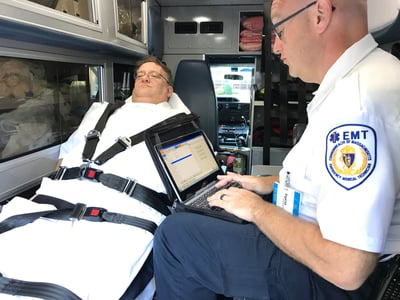4 Must-have Data Points for Dispatch-Billing Alignment and Maximum Reimbursement
ROI from CQI
(4 min read) CQI involves more than just checking reports to make sure that the “red” went away, it’s a continuous process focusing on quality, progress, and outcomes
Was this information valuable?

(4 min read) CQI involves more than just checking reports to make sure that the “red” went away, it’s a continuous process focusing on quality, progress, and outcomes. It’s an investment that individuals, organizations, and systems need to embrace (and get positive returns from in the process).
I started my EMS career with Continuous Quality Improvement (CQI) in which you would be calling for a union representative as you were on your way to the chief’s office ... hoping that you could return-to-duty without a letter of reprimand in your personnel file. Over the course of a few years – and a thousand miles of distance – I learned the true benefits of what a strong and supported CQI program looked like. I also learned the true Return On Investment (ROI) opportunity from CQI.

Error Reduction
Protocol compliance, accountability in one’s clinical care, and examination of clinical & medical errors performed in the field - these are all aspects of quality recognition that can be gained from a Patient Care Report (PCR). Further analysis, best practice evaluation, and simply having your providers talk you through the call can all help you to identify processes needing change, and risks needing further reduction.
I recall reviewing a PCR where the paramedic providing care identified the proper medication to administer, documented its dose correctly in the narrative, but was grossly erroneous in the flow chart of the report. So, which dose was administered? Is this a simple documentation issue, or is it a clinical issue showing a gross error? Luckily, this situation resulted in a documentation issue, whereby the flow chart of the report auto-populated a medication dose that was “correct” for the medication delivered, but not in the correct context (0.25 mg/kg is grossly different than 2.5 mg/kg!). Because of CQI, this error was identified, and corrective actions could be taken to prevent it from occurring again (or actually causing harm to a patient as a result!).
Accountable Care
Grading a PCR with a score of 5 out of 5 indicates that it had exceptional documentation, along with appropriate clinical care; while a 0 out of 5 indicates the opposite. Assigning this initial grade, followed by a peer-reviewed evaluation of the initial grade, allows for increased accountability in terms of overall clinical care. When providers know that their work is being reviewed, graded, and then presented before their peers, they’re more likely to take documentation (and clinical care) seriously. The ROI brought about by a grading process is exemplified through more accountable care which is followed by a reduction in errors.
Efficient Use of PCR Software
When a PCR grading process is utilized, it promotes more thorough documentation practices. This, in turn, promotes efficient use of your PCR software by combining user comfort with user ambition. As providers navigate through your drop-down menus, care tabs, or quick-select options, they improve their familiarity with your software with each use. Knowing that their reports will be reviewed either by an independent reviewer, or their peers, their ambition to provide a quality report should become evident over time, and their familiarization with your PCR software should follow suit. Their ambition to receive a “5” will be reflected in both their clinical care and their documentation. The PCR that once took nearly an hour to complete, now only takes minutes.

Improved Billing Capabilities
Combining increased familiarization, an ambition to produce a quality report, and a focus on error reduction, you’ve now developed an effective equation for the back end of your operations: its billing services. Through continuous quality review practices, providing positive and/or constructive feedback, and by seeking input regarding operational practices, you’re primed for operational, clinical, and financial improvement. That’s Return on Investment! Clinical care improves. Provider engagement improves. Billing practices improve. Where billing specialists once had to seek an addendum or combat denied claims – spending endless additional hours to mitigate multiple correctable issues – they’re now seeing increased approvals and improved coding, all because of CQI.
Reviewing PCRs and providing feedback doesn’t always (or only) need to be a punitive process. When you think about it, who’s to benefit from this? What happens to your ROI potential when this is your agency’s practice? What do you think your ROI potential could be if you turned your PCR review process into a true CQI process?
Related Posts
How EMS Agencies Can Reframe Need and Refocus Resources With Geospatial Analytics
How To Minimize Radio Chatter and Reduce Guesswork With Smarter Dispatch Resource Management
ZOLL Pulse Blog
Subscribe to our blog and receive quality content that makes your job as an EMS & fire, hospital, or AR professional easier.
ZOLL Pulse Blog
Subscribe to our blog and receive quality content that makes your job as an EMS, fire, hospital, or AR professional easier.




